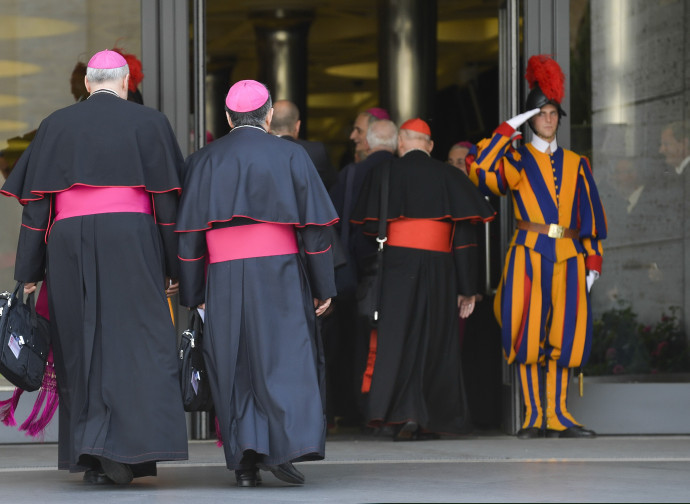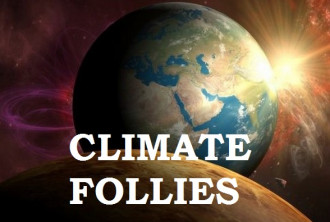Italian bishops poisoned synod supports gay pride
The Italian Episcopal Conference (CEI) publishes the synthesis document on the synod path and continues its attempt to reconcile homosexuality and transsexuality with the Catholic faith.

The Italian Episcopal Conference has published the synthesis document of the synodal path, entitled 'Leaven of Peace and Hope', which will be voted on by the Third Synodal Assembly of the Churches in Italy on 25 October. Many themes are dealt with. Let us focus on LGBT issues.
In paragraph 1.3 of Part I, entitled 'The care of relationships', we find some operational indications: 'The local churches and regional episcopal conferences should promote paths of accompaniment, discernment, and integration into ordinary pastoral care for those who wish to embark on journeys of greater ecclesial integration but who are on the margins of ecclesial and sacramental life due to their stable affective and family situations outside of the sacrament of marriage (e.g. second unions, de facto cohabitations, marriages, and civil unions).'
A literal exegetical interpretation of this passage suggests that it is beneficial to integrate divorced persons, cohabitees, those married only civilly and homosexual couples into the parish. However, it needs to be clear that integrating them does not mean entrusting them with significant responsibilities in the parish. This is partly because they may be inadequate (for example, a cohabitee cannot teach catechism), and partly to avoid scandal; that is, to avoid the entrusting of responsibilities to these people being interpreted as an endorsement of their condition, which is contrary to natural morality. Moreover, integrating, accompanying and welcoming these people implies that the parish priest and the other faithful must persuade them, in the best way possible, that continuing to live according to these conditions is not good for them because it is contrary to God's will.
These two reflections, among the many that could be articulated on this point, are completely absent from the Italian Episcopal Conference's document. Therefore, it is necessary to interpret the aforementioned passage using a different exegetical approach. In the Catholic Church, there is room for everyone — and this is appropriate — as well as everything: adultery, homosexuality, fornication, and so on. The CEI espouses this purely Bergoglian approach.
This interpretation is also supported by a previous passage in which the CEI writes, 'We do not want to forget that "the gaze of faith shuns rigid categories and asks us to welcome nuances, including those that cannot be seen with the naked eye" (CEI, Lineamenti per la prima Assemblea sinodale – LAS – 2024, 6).' However, the nuances of practised homosexuality, adultery, etc. are not to be welcomed, but rejected, as they are dark tones of a colour clearly distinct from the white of holiness. One can and should welcome the sinner, but not the sin. It may be a rigid conceptual category, but it is the truth that is often rigid.
The inclusive approach to sin that guides these indications of the Italian Episcopal Conference must also be applied to the next programmatic point: 'That the local churches, overcoming the discriminatory attitude sometimes widespread in ecclesial circles and society, commit themselves to promoting the recognition and accompaniment of homosexual and transgender persons, as well as their parents, who already belong to the Christian community'.
Firstly, a terminological note: Homosexual persons have become homo-affective persons. Emphasising affection and feeling better predisposes Catholics to accept homosexuality. Secondly, the term 'transgender' is ideological, as is the term 'gender identity' that recurs later. We should talk about transsexual people instead. 'Gender' is a person's perception of belonging to a sex. It is subjective and can therefore be fallacious. Sex, on the other hand, is an objective fact and is therefore truthful in itself. One must recognise one's sex and adapt one's perception accordingly. Therefore, using the term 'transgender' espouses LGBT ethics: it is me who chooses my sex.
However, the most important point is that the CEI speaks of 'recognising' homosexual and transsexual people and their families. We do not believe that 'recognition' should entail discovering that Titius is homosexual or knowing that Titius is transsexual, or that Caius and Sempronia are Titius's parents. Why would the CEI encourage the creation of a dossier on homosexual and transsexual people? It would sound like a filing system. Clearly, 'recognition' should mean 'unreserved acceptance of homosexual orientation and transsexuality, and support for families in this regard'.
This interpretation is corroborated by the following passage in the 'Attention to the affective dimension' paragraph: 'That the local churches [...] set up [...] teams to enhance good pastoral practices already in place, and coordinate new formation courses on relationships and bodily-affectivity-sexuality, taking sexual orientation and gender identity into account, especially with regard to pre-adolescents, adolescents, young people, and their educators; and that the local churches ensure that forms of psychological, spiritual, and conscience abuse do not take place in various educational contexts, including with regard to sexual orientation'.
Here, the Italian Episcopal Conference is referring to initiatives and pastoral realities that openly support LGBT+ people, such as Project Gionata. However, there’s more and it gets worse: the CEI qualifies persuasion to conversion for homosexual persons that is asking them to abandon this condition contrary to personal dignity, as psychological, spiritual and conscience abuse. The CEI thus espouses the affirmative approach typical of certain contemporary psychologies: 'Do you feel gay? That's not a problem, and I won't tell anyone; otherwise, I would commit an act of violence towards you. One could argue that the Italian Episcopal Conference does not explicitly state that encouraging the abandonment of homosexuality is abusive. However, given the complete absence of doctrinal references in the document that qualify homosexuality and transsexuality as disordered conditions, it is reasonable to conclude that the Italian Episcopal Conference views any proposal aimed at rediscovering one's heterosexuality as abusive.
This interpretation is also endorsed by another passage in the CEI document, which is the logical conclusion of the previous passages: 'Let the CEI support with prayer and reflection the "days" promoted by civil society to oppose all forms of violence and show solidarity with those who are hurt and discriminated against (days against violence and gender discrimination, paedophilia, bullying, femicide, homophobia and transphobia, etc.).' Here, the CEI supports Pride and asks for prayers for its success. One could also argue that the CEI only wants to support civil initiatives aimed at combatting real and unjust discrimination against homosexuals and transsexuals, avoiding any ideological bias. Answer: where are these initiatives? They do not exist. The CEI speaks of 'days' and, with regard to LGBT issues, only LGBT Pride Days and Pride Month exist. Therefore, the CEI explicitly supports Pride. This is the truth. To avoid any risk of misunderstanding, however, it should have explicitly criticised Pride events, which are blasphemous and sacrilegious. This would have made it clear that the CEI's support was reserved for initiatives of a different nature.
In this document, the Italian Episcopal Conference continues its attempt to reconcile homosexuality and transsexuality with the Catholic faith.




